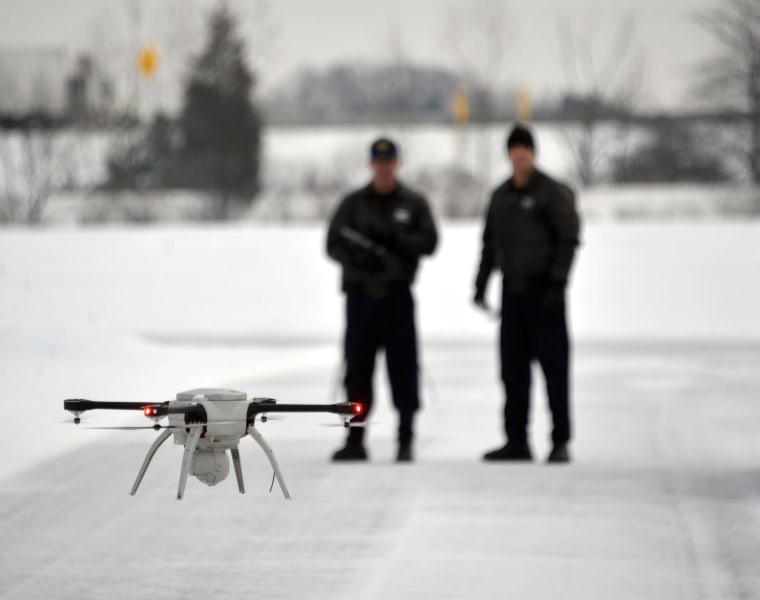WASHINGTON — Long-awaited rules to usher in a new era in which small, commercial drones zipping through U.S. skies are a part of everyday life were proposed by the Federal Aviation Administration on Sunday.
The proposal lays out requirements commercial operators must meet such as passing a knowledge test administered by the FAA and a security check by the Transportation Safety Administration in order to fly small drones, defined as weighing less than 55 pounds. It is likely to be two or three years before the rules are made final, but federal officials said that once they are in place the economic and safety benefits of unmanned aircraft are expected to be enormous.
Among the chores that officials envision drones performing: Aerial photography and mapping, crop monitoring, and inspections of cell towers, bridges and other tall structures. But the proposal includes safety restrictions such as keeping drones within sight of operators at all times and no nighttime flights. That could mean no package or pizza deliveries by drone. Drones would also have to stay at least 5 miles away from an airport.
"We have tried to be flexible in writing these rules," said FAA Administrator Michael Huerta. "We want to maintain today's outstanding level of aviation safety without placing an undue regulatory burden on an emerging industry." He said the agency intends to issue final rules as quickly as it can.
Even with the restrictions, drones are expected to play a "transformative role in fields as diverse as urban infrastructure management, farming, public safety, coastal security, military training, search and rescue, and disaster response," the White House said in a presidential memorandum on privacy released in conjunction with the rules.
The memorandum lays out measures federal agencies must follow to guard against abuse of data collected in drone flights. Among other steps, the order requires agencies to review privacy and civil rights protections before deploying drone technology and to adhere to a range of controls. Personally identifiable information collected in drone flights is to be kept no longer than 180 days, although there are exceptions.
It's questionable whether such steps will satisfy civil liberties advocates, who've objected strongly to the government's vigorous use of digital surveillance in the name of national security.
The proposal also raises the possibility that final rules may include a separate category for very small drones — those weighing 4.4 pounds or less — that would include fewer restrictions.
The proposed rules are "a good first step" bringing the U.S. closer to realizing the benefits of drone technology, said Brian Wynne, president and CEO of the Association for Unmanned Vehicle Systems International, a trade group.
